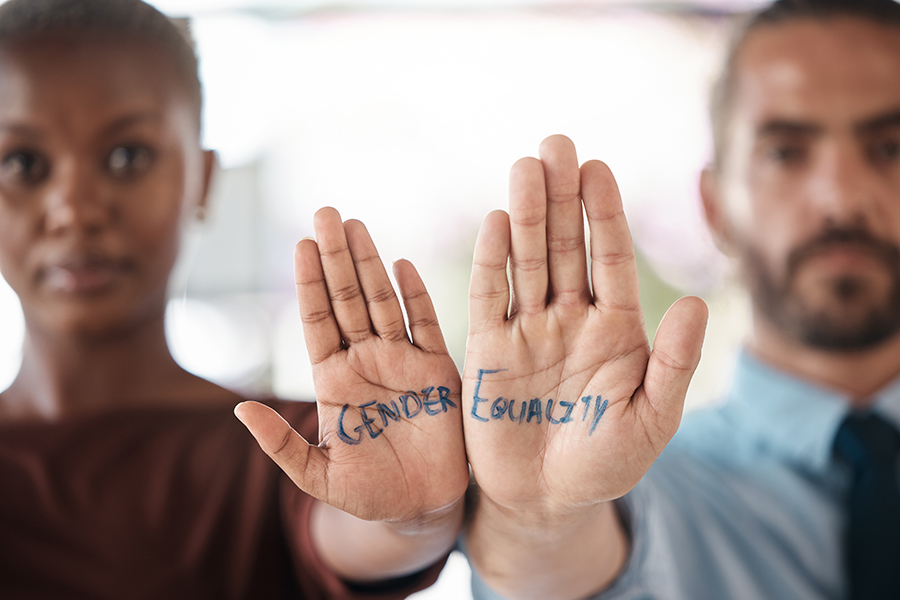Exploring the impact of Title IX on women’s rights and inclusion in sports
Title IX is an amendment to the 1964 U.S. Civil Rights Act introduced in 1972, which prohibits discrimination based on gender in educational programmes and sports. Despite sparking heated debates and having unexpected consequences, this law undoubtedly played a key role in broadening women’s rights, giving women access to sports and to post-secondary education. Denise Green, Chair for the Department of Social Work and Human Services, and Professor at Wellstar College of Health and Human Services, recently co-authored a paper with Samantha Williams, diving into the history of Title IX and outlining its most crucial contributions to the development of the modern female.
The access of women to obtain higher education and participate in competitive sports builds on decades of civil rights battles and legislations. A pivotal step towards establishing these rights in the United States was Title IX, a federal law introduced in 1972 as an Education Amendment of the 1964 U.S. Civil Rights Act.
Title IX was originally meant to reduce gender disparities in educational settings, yet it extended beyond education, promoting inclusivity in sports and other male-dominated fields. By prohibiting the discrimination of women and their exclusion from academic and sports programmes based on their sex, this law was a pivotal turning point for women across the USA, paving the way for the equity and inclusivity observed today. Title IX also has international reach and influence as women from across different countries all over the world are admitted into higher education institutions in the USA.

Denise M Green, professor at WellStar College of Health and Human Services, recently collaborated with Samantha E Williams, a licensed social worker, from Troy University. Together, they have published a research article that explores the history of Title IX, summarising its most salient aspects, limitations, and associated achievements. Their paper serves as a roadmap towards understanding how this law, which is often considered the most successful civil rights statute in history, shaped the development of the modern female.
A brief history of Title IX
To truly understand how deeply Title IX affected the lives of women in the USA, one must first examine the landscape in which it was introduced. Before its enactment, the Civil Rights Act of 1964 merely prohibited the discrimination and exclusion of any ‘person’ on the ground of their race, colour or nationality, from public academic programmes and other federally funded programmes.

At the time, the statute did not mention sex as a potential ground for discrimination, thus it did not consider and address the potential wish of women to take part in these programmes. The 20th century was a crucial historical moment for women’s rights, as the industrial revolution marked a time when many women started working in factories, thus no longer bearing only the roles of mothers, caretakers, and homemakers.
Title IX was originally meant to reduce gender disparities in educational settings, yet it extended beyond education, promoting inclusivity in sports and other male-dominated fields.This change in their societal role ultimately prompted women to start demanding for more rights, ultimately leading to the passing of the Women’s Suffrage Bill in 1920, which gave women the right to vote, and the 1938 Fair Labour Act, promoting parity and equity between sexes in the workplace.

While they could vote and received similar rights to male co-workers, women had to wait half a century longer to be officially able to enrol in academic and sports programmes. The idea for an amendment to Civil Rights Act to address sex-based discrimination was introduced in 1970, yet the initial version of Title IX was rejected, reformulated, and ultimately approved in 1972.
The final version of Title IX states that: ‘No person in the United States shall, on the basis of sex, be excluded from participation in, be denied the benefits of, or be subjected to discrimination under any education program or activity receiving Federal financial assistance’. While the statute does not specifically mention sports, the participation of women in sports soon became a heated topic for debate.
A pervasive effect on female sports and athletics
Although it was originally meant to facilitate the inclusion of women in education, the enactment of Title IX is now also considered a crucial step in the journey towards enabling the participation of women in sports. After its introduction, women’s rights advocates started debating about what ‘activities receiving Federal financial assistance’ women could no longer be excluded from, with a keen focus on sports.
At the time, many schools prohibited women from taking part in sports classes with their male peers and there were still limited opportunities for women to practice sports. Title IX gradually changed this, prompting the Division of Girls’ and Women’s Sports and the American Association for Health, Physical Education and Recreation to establish the Association of Intercollegiate Athletics for Women (AIAW).
AIAW was created with the mission of promoting the engagement of women in intercollegiate sports, yet it still prevented women from accessing sports-related scholarships and taking part in competitive events. The association was eventually dismantled in 1983, after the court ruled in the favour of female athletes who felt discriminated by the lack of scholarships available.

A further milestone for women athletes was the passing of the 1987 Civil Rights Restoration Act, which allowed students to use Title IX as a statute of reference for seeking monetary damages in cases of sex-related discrimination. In the decades after the enactment of Title IX, the number of girls playing sports in high school grew exponentially, going from a mere 300,000 before 1972 to over 3 million in 2011.
Achievements and shortcomings of Title IX
In their paper, Green and Williams highlight the main positive effects of Title IX, as well as issues originating from its enactment. One of its most beneficial effects on society was that it promoted the inclusion of women in traditionally male-dominated fields, including sports as well as science, technology, engineering, and maths (STEM).
While women are still underrepresented in many STEM fields and are sometimes perceived as ‘unsuitable’ for some professions, the growing number of female scientists and athletes shows that outdated social norms are gradually transforming, encouraging more women to make career choices that would once have been unavailable to them.
By promoting the inclusion of women in sports, Title IX also positively impacted US health, as physical exercise has been associated with a reduced risk of breast cancer and obesity, as well as improvements in mental health. Practicing sports can thus help women maintain their health, while also boosting their self-esteem, improving their body-image, and reducing stress.

The main limitation of Title IX outlined in the paper is that it initially left much room for interpretation. By failing to clearly delineate the ‘activities’ and situations it applied to, the statute sparked much debate, with some schools still choosing not to offer women and men equal resources, opportunities, and financial support.
Green and Williams also emphasise the important role that the National Collegiate Athletic Association (NCAA) played over the years in uncovering deep-seated disparities between female and male athletes. Media coverage of women’s sports, including the Women’s World Cup, Women’s Athletics, and Tennis Tournaments, also helped to spotlight the achievements of female athletes, even if these tournaments are still far less followed by media or financially supported when compared to men’s tournaments.
Present and future considerations
Overall, the research shows that despite its gradual influence on society, Title IX exceeded original expectations, significantly broadening horizons for women both in education and sports, while also preventing their exclusion from programmes and protecting them against discrimination. It also had a global impact, inspiring development of various initiatives supporting the rights of women to obtain education and practice sports in other countries worldwide.
The effects of this federal law on women’s access to sport are well-documented, as the number of female athletes and sports professionals has spiked over the years. In 2012, the number of recorded female athletes in US colleges was 150,915, while 2.78 million girls in high school participated in competitive athletics; 13,792 women were employed as athletic professionals, 3,974 as coaches, 215 as athletic directors, and 7,024 as assistant coaches. These numbers are staggering compared to those recorded before the introduction of Title IX.
Future policies and amendments of civil rights statutes could help to address some of the current issues highlighted in Green and Williams’ paper, further reducing discrimination and disparities.While much progress has been made towards achieving equity for women in sports, education, and various other settings, there is still much to be achieved. For instance, some studies found that women tend to drop out of sports and some STEM courses more often than men, whether after starting a family, for a lack of career prospects, or for other reasons.
The paper also highlights existing biases in women’s sports, such as the veiled assumption that male trainers and coaches are better at teaching sports, along with the sexualisation of female athletes or the supposition that they are lesbians or ‘tomboys’. Finally, many women, including athletes, are still paid significantly less than men who share their same profession.

Future policies and amendments of civil rights statutes could help to address some of the current issues highlighted in Green and Williams’ paper, further reducing discrimination and disparities. They could also address discrimination of individuals who fall outside of the binary views of gender, improving the quality of life for those who do not identify as male or female.
Personal Response
How has Title IX impacted the lives of women living outside the USA?There are 1,886 international women participating in NCAA Division 1 sports in 2021. This impact of post-secondary education and high-level sports participation for these international women will benefit them, their families, and the environment they choose to work in. The skills learned in competition on and off the field will transfer to move the issues of parity for women forward through experience and direct application in a manner that has not been seen in any previous rights movements.